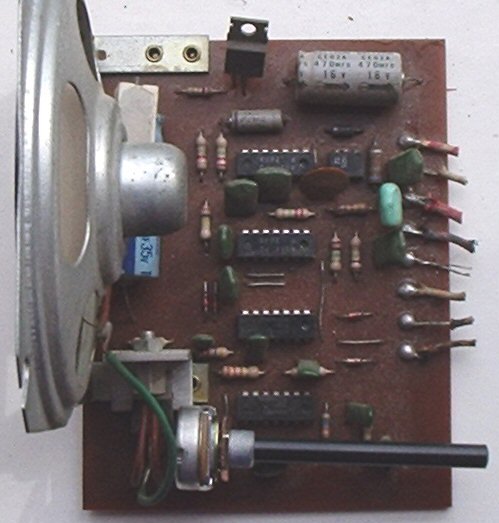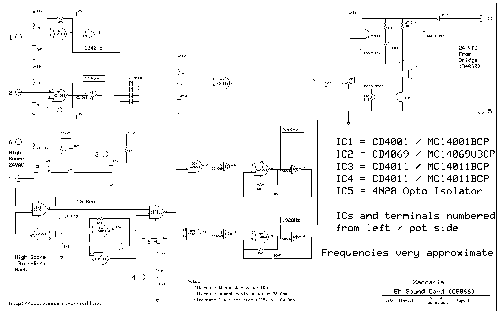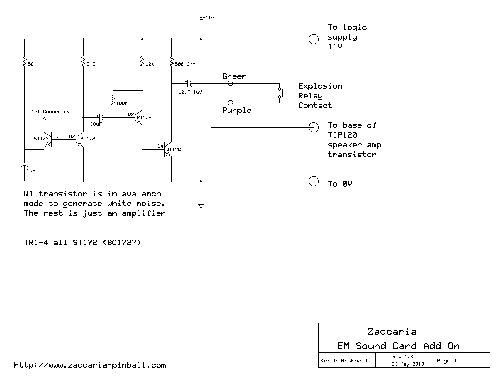
 |
| Photo by John Womersley. |
Used on Combat, Supersonic, Nautilus, Circus, and Aerobatics (maybe others?), these could make three sounds, plus a high score "wail" sound. They may not have been reliable, and do not seem to have been popular with operators. When they failed, they were likely to have been replaced by retro-fitted chime units with a little bit of creative rewiring.
Thanks to John Womersley.
The sound card has a TIP29 transistor that regulates the 24V DC down to about 11V for the logic. There are 4 oscillators each made from a NOR gate and an inverter that provide the 4 score tones. These are OR'ed together through 4 IN4148 diodes, through a gate that prevents clicks during power up, and into a TIP120 power transistor that is protected by an NTC thermistor across base-emitter, bolted to the same heatsink. The wiring of the volume pot is a bit strange and looks like a tracking error on the board that should be from the wiper to one end, not between the two ends.
There is an opto-isolated input between pins 6 and 7 that accepts a 24V AC signal when the high score target is reached (400k on the Combat). This triggers a timer for about 10 seconds using half of IC4, which in turn enables an oscillator generating about 6Hz using the other half of IC4. The output of this oscillator switches between two of the tone outputs to form the 'biri-biri' warble that was the signal in Italy for the barman to give you a drink (since replays weren't permitted, I think).
The second sheet shows the daughter-board which is tacked on the side of the sound card on Combat machines to make the 'explosion' sound. It is quite interesting as it uses TR1 with just the base-emitter connected in reverse so that it continuously breaks down (avalanches) to make white noise which is then amplified by the rest of the circuit. The circuit runs continuously and is switched by a relay contact to a connection patched onto the base of the TIP120 speaker amplifier of the sound card.
Thanks to Keith Withnall.
| Redrawn Schematics | |
|---|---|
 |
 |
| Original artwork thanks to Keith Withnall. Redrawn by David Gersic. | |
David Gersic [an error occurred while processing this directive]
Copyright © 2001. All rights reserved.
This document may be freely distributed so long as the content is not modified.